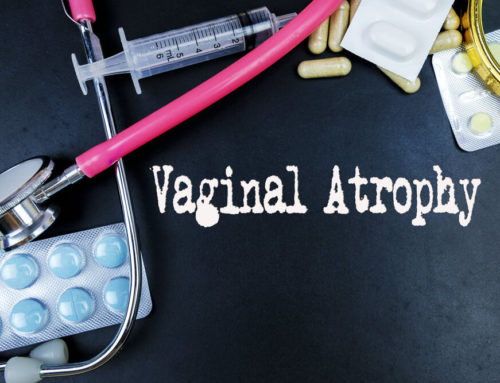The luteal phase of the menstrual cycle is the period that happens right after a woman ovulates (when the ovary releases an egg). Typically, this phase will last for about two weeks and end with the menstrual period. The luteal phase is only one of the menstrual cycle’s four phases, and the main role of the luteal phase is pregnancy, i.e., preparing the uterus for a possible pregnancy.
If you are looking for a women’s health specialist in Hialeah to learn more about the luteal phase or generally about the female menstrual cycle, feel free to contact Carreras Medical Center. Still, before you do, give this article a read, as it will discuss your period after ovulation, the most prevalent luteal phase symptoms, and will also talk more about the connections between the luteal phase and pregnancy.
The Luteal Phase

As mentioned above, during the luteal phase of the menstrual cycle, the egg released by the ovary will travel to the fallopian tube and then to the uterus. If sperm manages to fertilize the egg, it will usually implant into the lining of the uterus, leading to pregnancy. If the sperm doesn’t fertilize the egg and it doesn’t plant, then the woman will get their period. When the bleeding starts, that also signals the end of the luteal phase.
The Four Phases of The Menstrual Cycle
Many women may not be aware, but each phase of their menstrual cycle plays a vital role in the process of reproduction:
Menstruation, commonly known as getting your period, occurs when the uterine lining (endometrium) sheds through the vagina. The first day of bleeding marks day one of this period.
The follicular phase comes next, during which the ovaries prepare the eggs for potential ovulation. Within the ovaries, the eggs grow inside structures called follicles. One dominant follicle will emerge and develop into an egg.
Ovulation is the phase when the ovary releases the most dominant egg, which was prepared during the follicular phase.
Finally, in the luteal phase, the released egg travels from the ovary through the fallopian tubes and into the uterus. This phase concludes with either pregnancy or menstruation, and in the latter case, the cycle starts again.
Again, What Happens During The Luteal Phase?
Following ovulation, the luteal phase begins, during which the dominant follicle responsible for releasing the egg transforms into the corpus luteum. Within the corpus luteum, progesterone and some estrogen are produced. As the luteal phase progresses, progesterone levels increase, resulting in the thickening of the uterine lining.
This thickened uterine lining plays a crucial role in creating an optimal environment for a fertilized egg to implant and support a successful pregnancy. At the same time, the elevated hormone levels cause the cervical mucus to thicken, providing a protective barrier against bacterial intrusion into the uterus.
If pregnancy does not occur during this cycle, the corpus luteum eventually dissolves, leading to a decrease in hormone levels. Consequently, the uterine lining sheds during the menstrual period.
The luteal phase typically lasts for about two weeks or 14 days. In a menstrual cycle of approximately 28 days, the average length of the luteal phase ranges between 12 and 14 days, though there can be variations. Similar to variations in the length of the menstrual cycle, the luteal phase may last anywhere from ten to 17 days and still be considered within the normal range.
Short and Long Luteal Phases
A luteal phase that won’t last longer than ten days is usually considered a short luteal phase. This means that women will get their period after only ten days of ovulation. This time usually isn’t enough for the lining of the uterus to thicken and grow enough for adequate embryo support. This means that most women with a short luteal phase may face difficulties getting pregnant.
On the other hand, having a short luteal phase may also be a sign of LPD or luteal phase defect. This happens when the lining of the uterus simply can’t thicken and grow enough to handle pregnancy, and as such, LPD may lead to miscarriages or infertility.
Conversely, a long luteal phase means just what it suggests. In these cases, the period will typically happen 18 days after ovulation. Having a long luteal phase can indicate different conditions and hormonal imbalances, such as PCOS (polycystic ovary syndrome). For this and other reasons, using a pregnancy test after two weeks of ovulation can be wise.
So, if the luteal phase is no longer than ten days long, women may experience difficulties getting pregnant because the uterus simply isn’t ready to support pregnancy. Still, this doesn’t mean that a shorter or longer luteal phase will mean interfertile problems. On that note, it’s always a good idea to talk with your provider if you have any concerns.
Luteal Phase Symptoms
There are specific ways you can tell whether you’re in the luteal phase or not, but it’s important to remember that not every woman will experience luteal phase symptoms.
- Changes in Basal Body Temperature: You can figure out whether you’re in the luteal phase or not by tracking your basal body temperature. This is also called your body’s resting temperature which will slightly increase after ovulation. This shift isn’t prevalent (it may be as minuscule as 0.4 degrees Fahrenheit). The best way to track your temperature is by measuring it immediately after waking up.
- Vaginal Discharge: The discharge from the vagina might also be a telltale sign of whether you’re in the luteal phase or not. The cervical mucus tends to change during the menstrual cycle, and during ovulation, the discharge is usually more slippery and wet. During the luteal phase, the discharge gets dryer and more paste-like.
Lastly, luteal phase symptoms may be similar to those most women experience during premenstrual syndrome or PMS.
As such, the following symptoms may suggest that you are in the luteal phase:
- Breast tenderness
- Mood changes
- Bloating
- Changes in appetite
- Acne
The Luteal Phase and Pregnancy

Conception, which is the meeting of the egg and the sperm, takes place in your cycle’s luteal phase.
It is essential to understand that conception and fertility are not synonymous. While conception occurs while the luteal phase lasts, the most fertile days of a woman’s cylce are actually during the follicular phase. If you wait to try to get pregnant after ovulation, you will only have a narrow timeframe of around 12 to 24 for conception to happen.
On the other hand, your highest likelihood of getting pregnant lies in having intercourse during the first five days leading up to ovulation, which falls within the phase before the luteal phase. To determine when you ovulate, utilizing an ovulation calendar can be beneficial.
Learn More
Understanding what happens in your body during the phases of your menstrual cycle can make getting pregnant easier. Still, you can get even more help from experts such as fertility specialists and pregnancy care providers if you have any concerns regarding your menstrual cycle. That said, feel free to reach out to our experts so we can schedule a consultation with you.
We are more than happy to answer all of your questions and address all your concerns.







